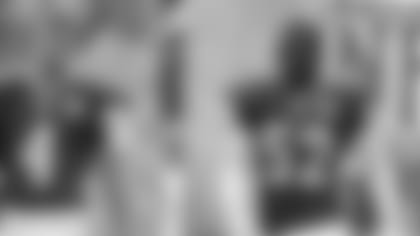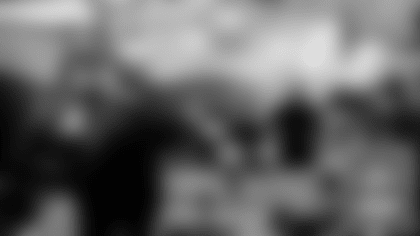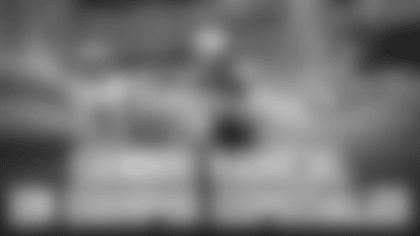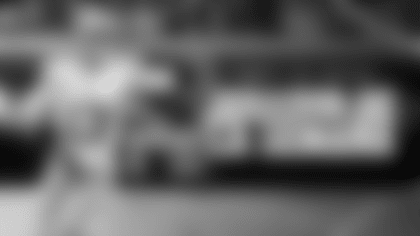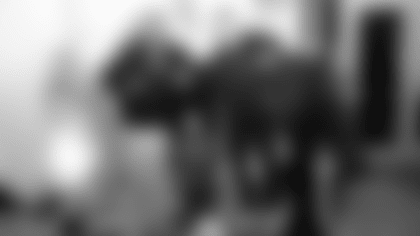The Pro Bowl continues to evolve over the years, with the 2010 version being held the week before the Super Bowl in South Florida. Several current 49ers players have excellent chances of being selected for their tremendous seasons.
The 49ers have had quite the history in the NFL's postseason All-Star game, with some of the franchise's most notable players making an impact in the annual contest.
The firstpostseason All-Star game between the league's NFLchampion and a team of professional All-Stars began at the end of the 1938 season. On January 15, 1939, the New York Giants won the first "Pro All-Star Game," 13-10, at Wrigley Field in Los Angeles, defeating a team of players from NFL teams and two independent clubs, the Los Angeles Bulldogs and the Hollywood Stars.
This format continued for the next four seasons. In January 1942, in the aftermath of Pearl Harbor, the game was moved from Los Angeles to the Polo Grounds in New York. The last "Pro All-Star Game" was held in December 1942. With the wartime NFL playing a reduced schedule starting in 1943, the series was abandoned.
The NFL revived the game (now dubbed the "Pro Bowl") in January 1951, after the 1950 season. The game was now a contest between conference All-Star teams: American vs. National (1951-53) and Eastern vs. Western (1954-70). The rival AFL, meanwhile, staged its own All-Star gamefrom 1962-70, using the same East vs. West format. The AFL departed from this format once, in the January 1966 game, when the league champion Buffalo Bills played All-Stars from the rest of the league.
After the AFL-NFL Merger of 1970, the name of the NFL's all-star game was changed to the "AFC-NFC Pro Bowl". Since the merger, the head coaches of the teams that lost in the AFC and NFC championship games have been selected as the coaches for the respective Pro Bowl squads.
However, contrary to popular opinion the Pro Bowl attitude has changed.
The vast majority of early Pro Bowls beginning with the merger were relatively low scoring; 20 of 26 games from the 1970 season through 1995 featuring less than 45 points. During the decade of NFC dominance of the Super Bowl from the mid-'80s through mid-'90s, the Pro Bowl became a type of grudge match for the AFC and produced some of the most brutally physical games of the entire season, with scores like 10-6, 15-6 and 17-3.
Once the AFC re-established conference parity the Pro Bowl became much looser and offensive-minded, with eight of the nine games between the 1996 and 2004 seasons producing at least 49 points, and an average of 64.1.
"Being together in Hawaii with all these great players for a week was a new experience," said former 49ers coach George Seifert, who coached the NFC in the 1994 Pro Bowl. "Plus it's relaxing over there… Well, what else does one go to Hawaii for if not to have fun and relax."
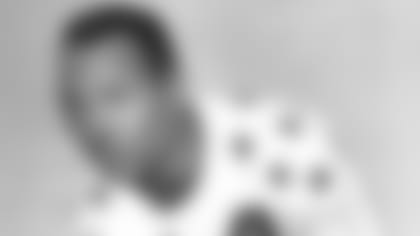
Currently, players are voted into the Pro Bowl by the coaches, the players themselves, and the fans. Each group's ballots count for one third of the votes. The fans vote online at the NFL's official site. There are also replacements that go to the game should any selected player be unable to play due to injuries."You can make money, but you can't manufacture the memories playing in the Pro Bowl," says Joe Perry, who played running back in the 1953, '54, '55 Pro Bowls. "That's something no one can ever take away from me."
Fun seemed to be the key word from other past 49ers Pro Bowlers. Center Fred Quinlin, a 1986 Pro Bowler, was one of the few players injured in a Pro Bowl game and faced minor surgery on his knee as a result.
"The injury forced my wife and I to cancel plans for post-game vacationing on Kawai to return home," he recalled.
"Everybody has fun over here," said running back Roger Craig during his stint at the 1986 Pro Bowl. "It's nice to get together with the other players who we play against during the season. It was a thrill for me to start for the NFC alongside Chicago's Walter Payton. It felt great!" Craig said of being in the same backfield with Payton, the NFL's all-time leading rusher at the time was an honor.
And it was a learning experience, too, for Roger.
"Walter gave me a few pointers and taught me some new tricks. I ended up having a good game, carrying the ball eight times for 25 yards and took two passes for 21 more and I made a couple of nice blocks." Like the others, Craig got in his share of sightseeing, and had an overall "excellent time" in Hawaii.
Since the Pro Bowl has no effect upon players' or teams' statistics and records, and is played at the very end of the season, the players generally take the contest much less seriously than the average regular season games. Conventional wisdom holds that they tend to "play soft" to avoid serious injuries which could impede or end their football careers.
Linebacker Joe Staley was one of only three rookies at the 2008 Pro Bowl. "Everyone is so cool and it's pretty amazing to play with these guys," he said at the time. "Everybody is such a professional and they already know what they are doing so it was very laid back. We were really just out here playing and I loved it." Willis returned in 2009, and very well could make it three straight appearances.
Uniforms
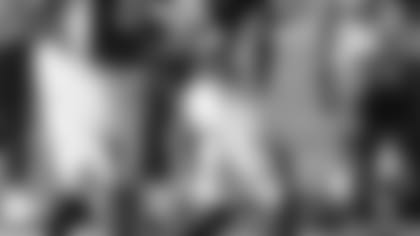
Because the teams are made of players from different NFL teams, using their own uniforms would be too confusing. The players all wear the helmet of their team, but the jerseys and pants are either a solid blue for the NFC or solid red for the AFC, or a white jersey with blue for the NFC or a white jersey with red accents for the AFC (away). While it has been speculated that the color of Pro Bowl jerseys is determined by the winner of the Super Bowl, this is untrue.
The design of Pro Bowl uniforms is changed every two years, and the color and white jerseys are rotated along with the design change. This has been Pro Bowl tradition since the switch to team specific helmets in the early '90s.
In the earliest years of the AFC-NFC Pro Bowl, the players did not wear their unique helmets, as they do now. The AFC All-Stars wore a solid red helmet with a white "A" on it, while the NFC players wore a solid white helmet with a blue "N" on it. The AFC's red helmets were paired with white jerseys and red pants, while the NFC's white helmets were paired with blue jerseys and white pants.
Cheerleaders
Each year, one squad member from every NFL team is chosen to participate in the collective Pro Bowl cheerleading squad. Traditionally, this is the highest honor of talent and popularity an NFL cheerleader can receive. In 2009, Jackie represented the 49ers Gold Rush.
49ers Pro Bowl Game Highlights
1953- The 49ers sent a total of seven players to the Pro Bowl, center Bill Johnson, halfback Hugh McElhenny, guard Al Milchalik, tackle Leo Nomellini, fullback Joe Perry, end Gordy Soltau, and quarterback Y.A. Tittle . The initial score of the game came when Leo Nomellini sacked Cleveland's quarterback, Otto Graham, and recovered his fumble in the first quarter. This set up Hugh McElhenny first of two touchdowns passes to lead the National Conference to a 27-7 victory.
1955- This one could be called the 49ers-Pro Bowl. Former 49ers head coach Buck Shaw had been fired following the season, but coached the Western Conference all-stars in the Pro Bowl. Quarterback Y.A. Tittle completed 16 of 26 passes and threw two touchdowns, most of them to teammate end Billy Wilson, who had 11 receptions for 157 yards and one touchdown. Fullback Joe Perry finished the scoring with a 3-yard touchdown run for the West.The West came back from a 19-3 deficit to win 26-19. Wilson was selected MVP of the game.
1958- Led by quarterback Y.A. Tittle, halfback Hugh McElhenny, end Billy Wilson, tackles Bob St. Clair, Leo Nomellini, and defensive back Jerry Mertens, the West defense dominated this game and held the East to only 149 total yards. The West won the game 26-7. McElhenny was named MVP of the game.
1960- 49ers defensive tackles Charlie Krueger, Leo Nomellini, defensive back Abe Woodson pressured the East quarterbacks all afternoon causing five turnovers. Quarterback Y.A. Tittle completed 13 of 18 passes for 178 yards and two touchdowns as the West dominated the East. The West had built up a 31-14 lead and cruised to a 38-21 victory. Former 49ers J.D. Smith, representing the Eagles, added a touchdown reception for the West.
**
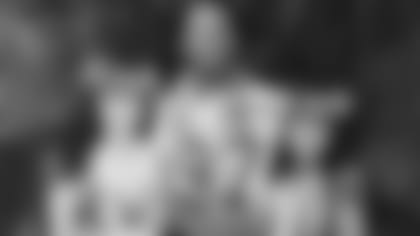
1996-** Wide Receiver Jerry Rice, playing in his 10th consecutive Pro Bowl, had six receptions for 82 yards and a touchdown to earn MVP game honors. The West had built up a 20-7 halftime lead and held off the East for a 20-13 victory. Quarterback Steve Young, free safety Merton Hanks, and defensive tackle Bryant Young, also played in the game.
Individual 49ers Pro Bowl Records
Service
Games Played- 13, Jerry Rice (1986-'96, '99, '02)
Receiving
Receptions, career- 33, Jerry Rice, (1987-88, '90-94, '96, '99)
Receptions, game- 11, Billy Wilson, (1955)
Yards gained, career- 459, Jerry Rice, (1987-88, '90-94, '96, '99)
Touchdowns, game-2, Hugh McElhenny, (1953)
Touchdowns, career-3, Hugh McElhenny, (1953,'59)
Passing
Completions, career- 41, Y.A. Tittle (1954-'55, '58, '60)
Completions, game-16, Y.A. Tittle, (1955)
Touchdowns, career-3, Y.A. Tittle (1955, '60)
Scoring
Points, career- 18, Hugh McElhenny, (1953, '59)
Points, game- 12, Hugh McElhenny (1953)
Touchdowns, career- 3, Hugh McElhenny (1953, '59)
Interceptions
1-Deion Sanders, (1995); Leo Nomellini (1952)
Kicking
Longest punt- 64 yards, Tom Wittum, (1974)
Field Goals-3, Tommy Davis (1963-'64)
PATS- 5, Tommy Davis (1963-'64)
Martin Jacobs is a freelance writer and has written two books on the 49ers: "Before They Were Champions-the San Francisco 49ers 1958 Season" and "San Francisco 49ers-Images of Sport."He can be reached by email at **MJacobs784@aol.com*.*


